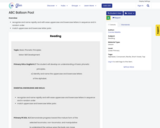
recognize and name rapidly and with ease uppercase and lowercase letters in sequence and in random order match uppercase and lowercase letter pairs

recognize and name rapidly and with ease uppercase and lowercase letters in sequence and in random order match uppercase and lowercase letter pairs
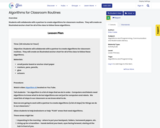
Students will collaborate with a partner to create algorithms for classroom routines. They will create an illustrated anchor chart for all of the class to follow these algorithms.

Children will be introduced to a garden. As they tour the garden, they will learn vocabulary.

Children will build background and vocabulary that will help them recite and comprehend "Humpty Dumpty".Children will learn to track the print in the nursery rhyme, understand the boundaries of words, and identify individual words.

Section 1 - Children will learn to recite and comprehend the rhyme "Jack and Jill" and its vocabulary.Section 2 - Children will learn to track the print in the nursery rhyme, understand the boundaries of words, and identify individual words.

Children will answer questions and learn vocabulary while enjoying this story.

Section 1 -Children will answer questions and learn vocabulary while enjoying Little Red Riding Hood.Section 2 - Children will build confidence as writers by watching this teacher as she writes about the theme of kindness from Little Red Riding Hood. This video would be a good introduction to the student's own writing about the story.Section 3 - Children will enjoy a retelling of the story, then work on identifying the beginning, middle, and end of the text.Section 4 - Children will build confidence as writers by watching this teacher draw and write about the character of the wolf. This video would be a good introduction to the student's own writing about a story character.

Children will learn to recite the nursery rhyme One, Two, Buckle My Shoe orally and with sign language. They will also learn Hey Diddle, Diddle and Itsy Bitsy Spider.

The Three Little Pigs is told orally with pictures only and the children are asked to make predictions based on text features. At the end, the children are asked to compare the houses from the story to where they live. The children will enjoy a puppet show of the Three Little Pigs. Teachers can use this video to teach a sequence of events and story elements.

Art projects are a fun way teachers can teach non-fiction sequencing. In these videos, children will learn to follow directions and expand their vocabulary. The first project, monoprints, teaches the steps to create prints out of foil, cardboard, and paint. Through the second project, solar dying, children will learn the steps needed to create colorful string by placing food scraps in jars for the sun to dye.
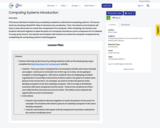
This lesson will teach students key vocabulary needed to understand computing systems. The lesson starts by showing a BrainPOP video to introduce key vocabulary. Then, the teacher and students will have a class discussion to review the components of a computer. After reviewing, the teacher and students will work together to label the parts of a computer and discuss each component as it is labeled. To wrap up the lesson, the teacher and students will continue to review the computer components by completing the computing systems matching game.
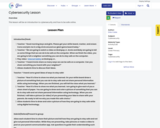
This lesson will be an introduction to cybersecurity and how to be safe online.
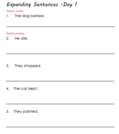
This is a mini-lesson for expanding sentences.
![Grid Challenges [Unplugged]](https://img.oercommons.org/160x134/microsite-vadoe-prod/media/courseware/lesson/image/Screen_Shot_2022-07-19_at_5.09.48_PM_dOPPtpJ.png)
Students will practice writing out code in a step-by-step manner and get familiar with debugging.

Set students up for programming success by creating a BeeBot anchor chart!These editable instructions will help students identify their role as planner or driver and set clear expectations of how Bee-Bot is used in computer programming. Tips:Introduce Bee-Bot whole classMake sure students understand the importance of the clear (x) button to erase the previous codealways press clear first to signal a new code (like how a capital letter signals the start of a new sentence) Plan the program in developmentally appropriate steps (some students program one step at a time, while others can program to the end goal)Turn the Bee-Bot off and use it as a game piece to write successful algorithmsHave students write their plan, or algorithm, on a whiteboard instead of using the cardsThe Bee-Bot emulator is perfect for guided practice!
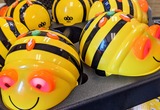
Students will work in pairs/teams to complete jobs in order to program a Bee-Bot through a grid.

Students will love programming their "robot teacher" to maneuver around the classroom in this introductory coding lesson. Basic computer science concepts are defined and applied as students work together to plan, create, and test algorithms. Students will recognize that programmers are the brains behind machines and technologies.
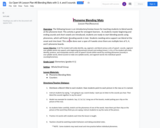
The following lesson is an introductory/review lesson for teaching students to blend words at the phoneme level. This activity is great for emergent learners. As students master beginning and ending sounds and short vowels are introduced, students are ready to start blending words using phonemes, which will foster decoding words in text. Students needing extra support can blend at the onset and rime level. This can be done over a span of 4 weeks since there are multiple tiers of 3, 4, and 5 phoneme boards.

The following lessons are introductory/review lessons for teaching students to distinguish concepts of print: words, and sentences from pictures. These lessons help a student’s oral knowledge by repeating sentences and phrases as well as counting/tapping words in sentences. The teacher will use Picture sorts according to the grammatical function in a sentence. (nouns and verbs)
This activity was created for grade K to coincide with teaching sentence structure
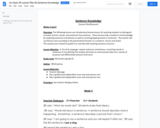
The following lessons are introductory/review lessons for teaching students to distinguish concepts of print: words, and sentences from pictures. These lessons help a student’s oral knowledge by repeating sentences and phrases as well as counting/tapping words in sentences. The teacher will use Picture sorts according to the grammatical function in a sentence. (nouns and verbs)
This activity was created for grade K to coincide with teaching sentence structure